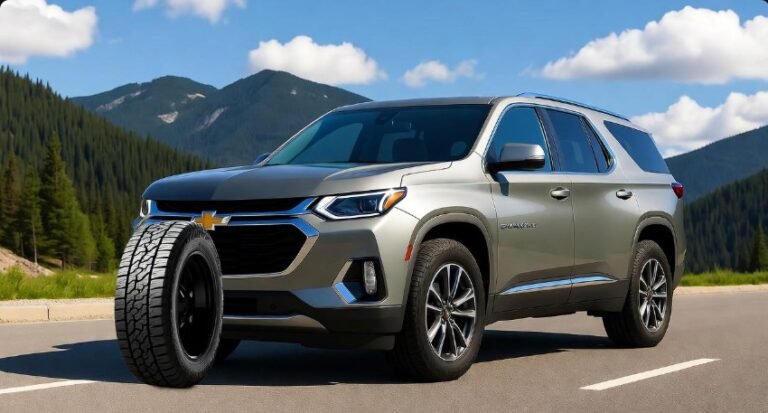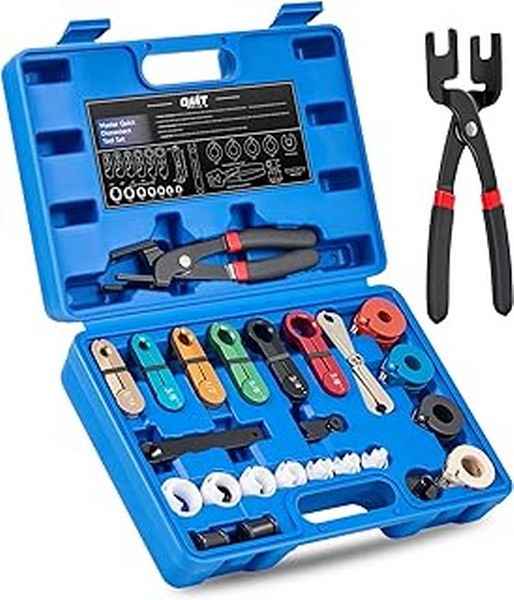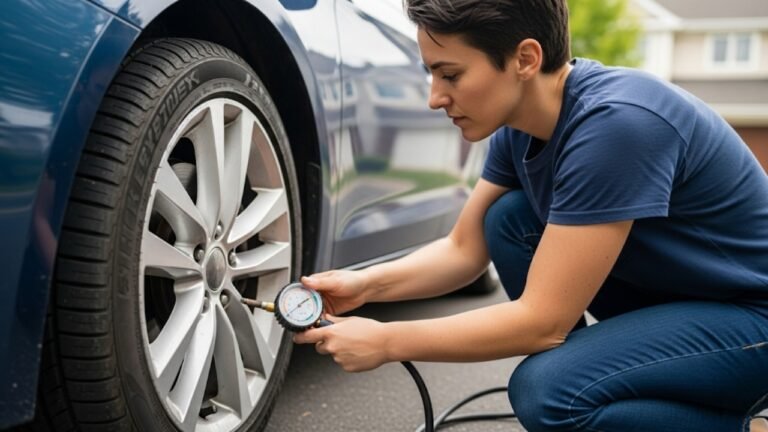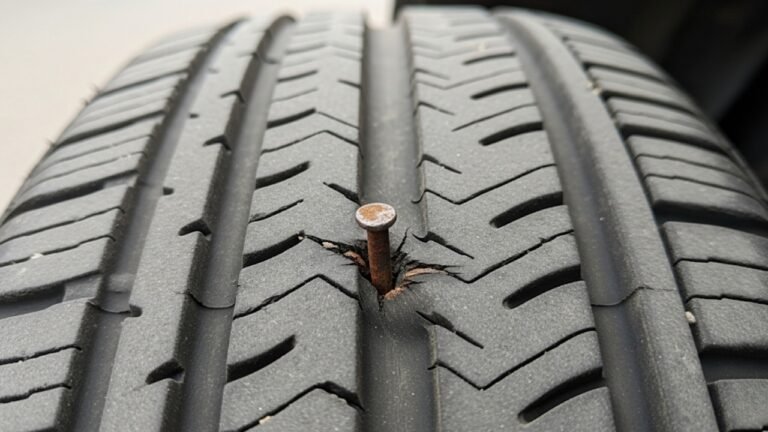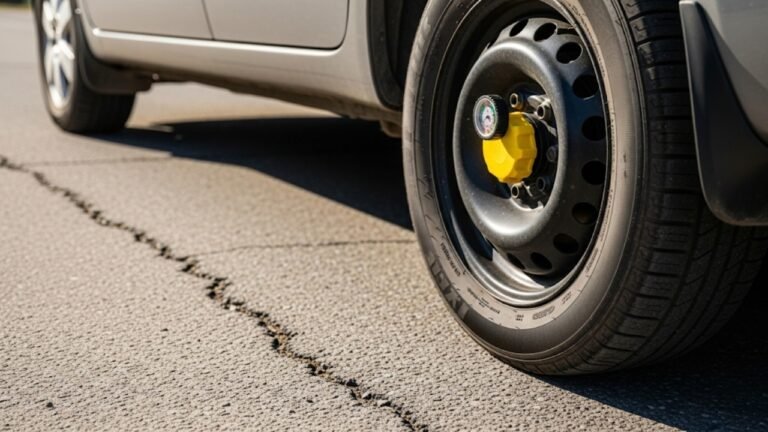Are Bridgestone Tires Good? My Honest Take
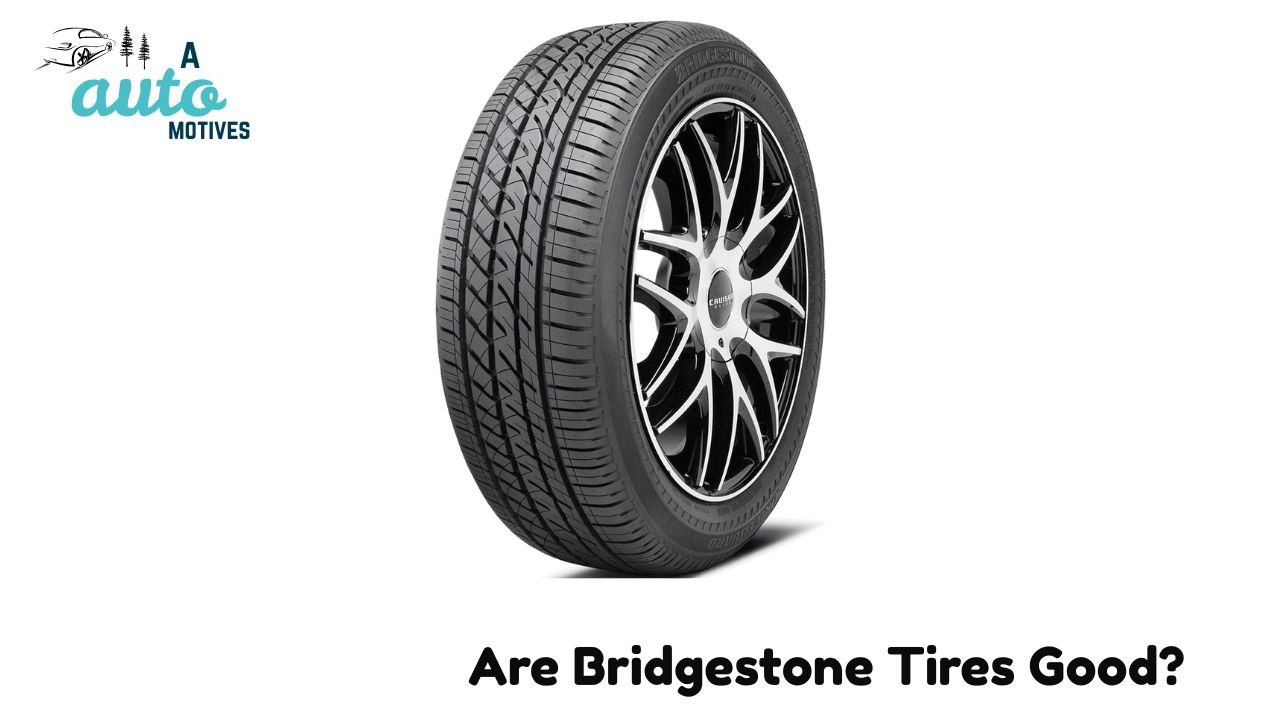
Finding the perfect tires sometimes feels like hunting for that one coffee shop that brews your drink just right. You know what I mean — every brand claims they’re the best, every ad promises grip, safety, and comfort. But until you’ve actually driven on them, it’s hard to know who’s telling the truth.
Over the past few years, I’ve tried tires from Michelin, Goodyear, Continental, and yes, Bridgestone. I’ve taken them through scorching highways, slippery city streets, and a few late-night road trips in pouring rain. So, when someone asks me, “Are Bridgestone tires good?”, I can answer not from theory, but from the driver’s seat.
Let’s break it down — from performance and comfort to durability and value — all through real-world experience and honest insight.
My First Experience with Bridgestone Tires
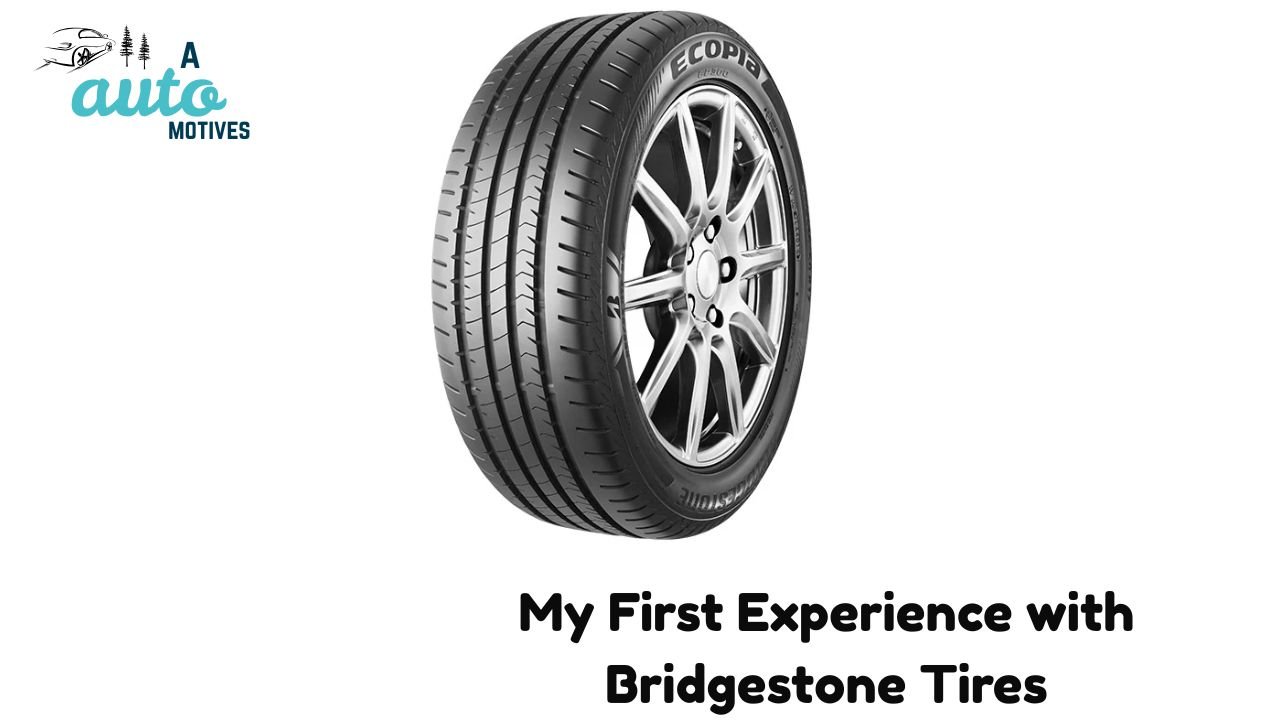
I still remember the first time I put a set of Bridgestones on my car. It was a pair of Bridgestone Turanza Serenity Plus, recommended by a mechanic friend who swore they were “the quietest things he’d ever driven on.” I didn’t think tires could make much difference until I hit the highway that evening.
The first thing I noticed wasn’t speed — it was silence. My car glided smoother, and those irritating hums I was used to hearing from my old tires were gone. I remember thinking, “Okay, maybe this brand actually knows what it’s doing.”
Since then, I’ve used different models — from Bridgestone Potenza for sporty performance to Ecopia for better fuel efficiency — and my impressions have deepened.
Performance and Grip on Different Roads
Performance is where Bridgestone tires really start to show their personality. I’ve driven on both dry and wet roads, even through a light snowstorm once, and they handled each situation with confidence.
On dry roads, the grip is excellent. Whether I was cornering on winding hills or braking suddenly on the highway, they felt sure-footed. There’s a steady sense of control — that calm feeling when your steering responds instantly instead of sliding.
In rainy conditions, they impressed me even more. The tread pattern seems to push water away effectively. I remember driving through a stretch of heavy rain outside Dhaka where visibility was poor. Cars ahead were swerving slightly, but mine stayed solid. That sense of stability — that’s where Bridgestone earns its name.
On snow or icy patches, the story shifts a bit. All-season Bridgestones perform decently in light snow, but in heavier conditions, I could feel the limits. That’s why the Blizzak series, their dedicated winter line, exists — it’s built exactly for that.
In short, for daily use and mixed weather, Bridgestone tires grip well, brake safely, and inspire confidence.
Durability and Tread Life
One of the biggest things drivers care about is how long tires last. Nobody wants to replace them every year, right?
This is where I was pleasantly surprised. My first Bridgestone set lasted me just over 65,000 miles, and that’s with regular highway use. The tread wore down evenly — no bald spots, no patchy wear. I rotated them every 6,000 miles, and the performance barely dipped over time.
Compared to Goodyear and Continental sets I used before, Bridgestones seemed more consistent. Even after years of driving, they still had decent grip and handling.
Industry tests back this up too — many Bridgestone models are rated for 50,000 to 80,000 miles, depending on the line. That’s a solid lifespan, especially considering how rough some of our roads can be.
If you’re the kind of driver who likes long-term value, Bridgestone definitely holds up in the durability department.
Ride Comfort and Noise
Comfort might not sound exciting, but after a few long drives, it becomes everything. Bridgestone seems to understand that perfectly.
The first thing that stood out to me was how smooth the ride felt. Even on roads filled with potholes or uneven patches, the tires absorbed shocks well. My car didn’t bounce as much, and I could tell the sidewalls were doing their job.
On the highway, they’re impressively quiet. At around 70 mph, I noticed how the cabin stayed calm. With other brands, there’s always a faint hum, especially on coarse asphalt. With Bridgestones, that was noticeably reduced.
Of course, not all their models are the same. The Potenza performance tires are slightly firmer, built more for control than cushion. But if you go for touring models like Turanza, you’ll enjoy that relaxed, almost luxury-like comfort.
I’d say, for everyday driving — city commutes, long road trips, even occasional countryside drives — Bridgestone strikes an excellent balance between comfort and control.
Handling and Stability
Handling is one of those areas where you really feel the difference — especially when you take sharp turns or sudden lane changes.
I tested this on a familiar stretch of highway that curves sharply near Gazipur. With cheaper tires, I’d always slow down there because the car used to feel a little shaky. With Bridgestones, I tried the same turn at 80 km/h, and the difference was night and day. The tires gripped the asphalt firmly, and I didn’t feel any wobbling or slippage.
Even during sudden braking, the car stopped cleanly without skidding. That, to me, defines stability — when your tires keep you confident, not nervous.
And the feedback through the steering wheel feels right — not too loose, not too stiff. For me, that’s a huge plus. A tire that keeps your car stable at high speeds and still responds precisely at low speeds deserves credit.
Fuel Efficiency
This part might surprise you — tires can actually affect your fuel bill. Bridgestone has worked a lot on something called low rolling resistance, which basically means the tires require less energy to move.
I first noticed it when I switched from my older set to Bridgestone Ecopia EP422 Plus. Before that, my car averaged around 28 miles per gallon (MPG). After a few weeks on the Ecopias, I started seeing 30–31 MPG consistently. That’s not a massive jump, but it’s noticeable over time.
For hybrid or daily commuter cars, this can really add up. Bridgestone claims up to a 3–5% improvement in fuel economy for their eco-friendly models, and from my experience, that’s believable.
So yes, Bridgestone tires can help you save a bit at the pump, especially if you drive a lot.
What I Really Like About Bridgestone Tires
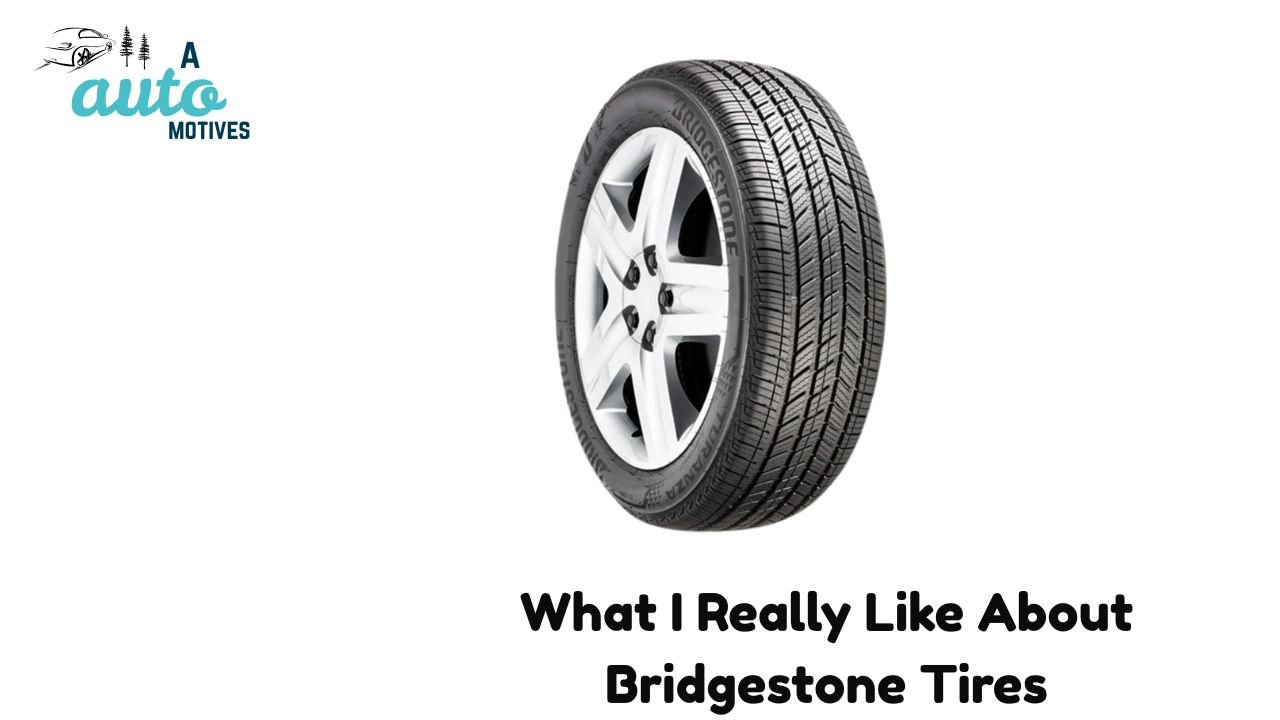
After using different models over the years, a few things stand out to me the most:
1. Excellent All-Weather Traction
From hot summer roads to monsoon-season rain, Bridgestone tires deliver. The tread designs seem well-engineered to manage water, dust, and heat equally.
2. Long Life and Even Wear
They don’t just last long — they wear out evenly. That’s important because uneven wear means poor alignment or a waste of money.
3. Great Comfort and Quiet Ride
For someone who drives both in city traffic and on long highways, I love how quiet and smooth they feel.
4. Slight Boost in Mileage
That 2–3 MPG improvement doesn’t sound like much, but over thousands of kilometers, it adds up.
5. Trusted Brand with a Proven Record
Bridgestone’s been around for decades, used in major racing events and standard cars alike. There’s a certain reliability in knowing they’ve mastered their craft.
Overall, if you want tires that feel premium without going overboard on price, Bridgestone ticks most boxes.
What Could Be Better
Now, no brand is perfect — and Bridgestone has a few areas that could improve.
1. Higher Price Tag
You’ll usually pay a little more compared to mid-range brands like Falken or General Tire. The difference isn’t huge, but noticeable if you’re buying a full set.
2. Not Ideal for Deep Snow
Their all-season tires can manage light winter, but for real snow driving, you’ll need something like the Blizzak series.
3. Some Models Are Hard to Find Locally
Depending on where you live, certain models might not be in stock. I’ve had to order mine online once or twice.
4. Slightly Firm Ride on Sporty Models
Performance lines like Potenza are tuned for control, not comfort. You’ll feel more of the road — good for speed lovers, but not for everyone.
Still, these are minor trade-offs considering the overall quality.
Comparison With Competitors
Let’s be real — it’s impossible to talk about Bridgestone tires without comparing them to other big names like Michelin, Goodyear, and Continental. I’ve personally used all three over the years, so I’ll give you the no-fluff comparison based on real-world use rather than spec sheets.
Bridgestone vs. Michelin
Michelin and Bridgestone are often mentioned in the same breath, and for good reason — both sit in the premium tire category.
In my experience, Michelin tires have a slightly softer ride and may edge out Bridgestone when it comes to road noise. Their tread life can also stretch a bit longer, sometimes up to 90,000 miles depending on the model. But Bridgestone counters that with stronger performance in wet conditions.
I found that Bridgestone tires offer better hydroplaning resistance and more confident cornering during heavy rain. On dry roads, both brands feel equally sure-footed, though Michelin tends to cost a bit more — sometimes by $20–$30 per tire.
So, if you value comfort above all, go with Michelin. But if you want a mix of grip, durability, and slightly better value, Bridgestone makes more sense.
Bridgestone vs. Goodyear
Goodyear is another solid contender. They make reliable tires with good all-weather capability, but in my opinion, Bridgestone feels more refined.
The tread patterns on Bridgestone tires seem to wear more evenly, and the overall handling feels tighter, especially at higher speeds. I’ve had Goodyear tires that developed a slight hum after 25,000 miles, but my Bridgestones stayed quiet much longer.
Goodyear might win when it comes to aggressive off-road or all-terrain options, but for highway and city driving, Bridgestone takes the lead in smoothness and longevity.
Bridgestone vs. Continental
Continental tires are great for handling and braking precision. They’re known for performance in European markets, and I’d say they feel a bit sportier. However, Bridgestones are more versatile. They adapt better to mixed weather and rougher roads.
Continental might win in pure grip, but Bridgestone wins in long-term reliability and comfort.
To sum it up, Bridgestone doesn’t necessarily dominate in every single category — but it consistently ranks high across all of them. That balance is what makes it such a dependable brand.
Who Should Buy Bridgestone Tires?
Not everyone needs the same type of tire. Some people drive in cities all week; others live for weekend road trips. So, who exactly should buy Bridgestones?
Perfect for:
-
Daily commuters who want dependable tires that last for years.
-
Highway drivers who value stability and a quiet ride.
-
Families or long-distance travelers looking for comfort and safety in mixed conditions.
-
Eco-conscious drivers aiming to get better fuel mileage.
Maybe not ideal for:
-
People who live in extreme winter climates — deep snow needs dedicated winter tires.
-
Those driving high-performance cars that demand ultra-sport tires for track-level grip.
Basically, Bridgestone tires are made for real-world driving — the kind most of us do every day. They’re reliable, safe, and don’t wear out too quickly.
Final Verdict: Are Bridgestone Tires Good?
If I had to answer in one word — yes.
But let me expand on that. Bridgestone tires are one of those rare products that actually live up to their reputation. They’re not flashy. They don’t scream for attention with wild marketing claims. Instead, they quietly deliver — mile after mile, in sun or rain.
I’ve driven tens of thousands of kilometers on them. They’ve saved me in unexpected downpours, handled sudden stops, and made long drives less tiring. That’s what I call value — not just because they last long, but because they feel right on the road.
If you want tires that balance grip, comfort, and longevity without costing a fortune, Bridgestone is a strong choice. Sure, they’re not the cheapest, and you might find slightly softer rides elsewhere, but their reliability makes up for it.
For anyone looking for tires that perform well across all conditions — from daily commuting to long road trips — Bridgestone gets a solid 9 out of 10 from me.
FAQs About Bridgestone Tires
1. Are Bridgestone tires good for all seasons?
Yes, most Bridgestone all-season tires perform very well in both dry and wet conditions. For mild winters, they’re fine. But if you live in areas with heavy snow or icy roads, consider the Bridgestone Blizzak series, which is built specifically for winter traction.
2. How long do Bridgestone tires last?
Depending on the model, you can expect between 50,000 and 80,000 miles of life. Of course, that depends on your driving habits, maintenance routine, and road quality. With proper rotation and alignment, they can easily last several years.
3. Are Bridgestone tires worth the price?
Definitely. While they’re not the cheapest, their combination of durability, grip, and fuel efficiency makes them a smart long-term investment. You’ll likely replace them less often, which saves money in the long run.
4. Do Bridgestone tires perform well in rain?
Yes. Their advanced tread designs channel water away effectively, reducing the risk of hydroplaning. Models like Turanza and Ecopia perform especially well in wet conditions.
5. How do Bridgestone tires compare to Michelin?
Michelin is slightly ahead in comfort and lifespan, but Bridgestone often beats it in wet traction and value for money. It depends on what you prioritize — comfort or cost-efficiency.
6. Do Bridgestone tires improve fuel economy?
Yes, especially their Ecopia line, which uses low rolling resistance technology to boost mileage by around 2–4%. That can make a noticeable difference over time.
7. Are Bridgestone tires good for long trips?
Absolutely. They’re smooth, quiet, and stable at high speeds — ideal for long drives. I’ve done multiple 400+ km road trips on Bridgestones and never felt fatigued from tire noise or vibration.
Final Thoughts
At the end of the day, tires aren’t just rubber circles — they’re what connect your car to the road, keeping you safe every single second you drive. Bridgestone understands that.
They may not be the cheapest, but when you’re gliding through a rainstorm at 100 km/h and your car stays stable, you realize what you paid for — peace of mind.
From city streets to long highways, Bridgestone tires deliver where it matters most: performance, comfort, and trust. If you’re looking for dependable tires that make every drive smoother and safer, Bridgestone deserves a spot on your shortlist.

